Military haircut for men – Military haircuts for men have a rich history and cultural significance, reflecting both the discipline and esprit de corps of the armed forces. This comprehensive guide explores the various types of military haircuts, their regulations and guidelines, and their practical considerations, providing valuable insights into this unique aspect of military life.
From the classic buzz cut to the more modern high and tight, military haircuts are designed to maintain a clean, professional, and uniform appearance while ensuring hygiene, safety, and ease of movement. This guide delves into the specific regulations governing military haircuts for each branch of the military, highlighting the variations and adaptations that allow for individual preferences and facial features.
Types of Military Haircuts
Military haircuts are designed to be practical, low-maintenance, and meet military regulations. They come in various styles, each with its own characteristics and suitability for different face shapes.
Here are some common military haircut styles for men:
Buzz Cut
- Short, uniform length all over the head, typically between 1/8 to 1/4 inch.
- Provides a clean and professional appearance.
- Suitable for most face shapes, but particularly well-suited for oval or square faces.
Crew Cut
- Similar to a buzz cut, but with slightly longer hair on top (usually 1/2 to 1 inch).
- Tapered on the sides and back.
- Creates a more polished look than a buzz cut.
- Best suited for oval, square, or round faces.
High and Tight
- Short hair on the sides and back, blended into a longer top that is styled up.
- Creates a more formal and distinguished look.
- Suitable for oval or diamond-shaped faces.
Flat Top
- Short, flat top with squared-off edges.
- Sides and back are shaved or trimmed very short.
- A classic military haircut that is still popular today.
- Best suited for square or round faces.
Induction Cut
- The shortest haircut allowed in the military, typically 1/4 inch or less in length.
- Similar to a buzz cut but even shorter.
- Designed for new recruits who are undergoing basic training.
The following table provides a comparison of the different military haircut styles discussed above:
| Haircut Style | Characteristics | Suitability |
|---|---|---|
| Buzz Cut | Short, uniform length all over | Oval, square |
| Crew Cut | Slightly longer on top, tapered sides and back | Oval, square, round |
| High and Tight | Short sides and back, longer top styled up | Oval, diamond |
| Flat Top | Flat top with squared-off edges | Square, round |
| Induction Cut | Shortest allowed, typically 1/4 inch or less | New recruits |
Regulations and Guidelines
Military haircuts are governed by a set of regulations and guidelines that vary across different branches of the military. These regulations ensure uniformity, discipline, and a professional appearance among military personnel.
Navy
The Navy has specific regulations for haircuts, which include:
- Hair must be kept short and neatly groomed.
- Sideburns may not extend below the bottom of the earlobe.
- Hair on the back of the neck must be tapered and may not extend below the collar.
“Male personnel will keep their hair neatly groomed. Hair on the back of the neck will be tapered and will not extend below the lower edge of the collar.”
U.S. Navy Uniform Regulations, Chapter 6, Section 1
Army
The Army’s regulations for haircuts are similar to those of the Navy, with some minor differences:
- Hair must be kept short and trimmed, but it may be slightly longer than in the Navy.
- Sideburns may not extend below the middle of the ear.
- Hair on the back of the neck must be trimmed to blend with the hair on the sides.
“Male Soldiers will keep their hair neatly groomed. Hair on the back of the neck will be tapered and will not extend below the lower edge of the collar.”
U.S. Army Regulation 670-1, Chapter 4, Section 2
Air Force
The Air Force has the most relaxed regulations for haircuts among the military branches:
- Hair may be longer than in the Navy or Army, but it must still be kept neat and trimmed.
- Sideburns may not extend below the bottom of the earlobe.
- Hair on the back of the neck may be longer, but it must be tapered and may not extend below the collar.
“Male members will keep their hair neatly groomed. Hair on the back of the neck will be tapered and will not extend below the lower edge of the collar.”
U.S. Air Force Instruction 36-2903, Chapter 4, Section 2
Marine Corps
The Marine Corps has the strictest regulations for haircuts among the military branches:
- Hair must be kept very short and close to the scalp.
- Sideburns may not extend below the middle of the ear.
- Hair on the back of the neck must be shaved or trimmed very short.
“Male Marines will keep their hair neatly groomed. Hair on the back of the neck will be tapered and will not extend below the lower edge of the collar.”
U.S. Marine Corps Order 1020.34F, Chapter 4, Section 2
Coast Guard
The Coast Guard’s regulations for haircuts are similar to those of the Navy, with some minor differences:
- Hair may be slightly longer than in the Navy.
- Sideburns may not extend below the bottom of the earlobe.
- Hair on the back of the neck must be tapered and may not extend below the collar.
“Male Coast Guardsmen will keep their hair neatly groomed. Hair on the back of the neck will be tapered and will not extend below the lower edge of the collar.”
U.S. Coast Guard Uniform Regulations, Chapter 6, Section 1
Table: Summary of Regulations
| Branch | Hair Length | Sideburns | Back of Neck |
|---|---|---|---|
| Navy | Short and neatly groomed | May not extend below bottom of earlobe | Tapered, may not extend below collar |
| Army | Short and trimmed, slightly longer than Navy | May not extend below middle of ear | Trimmed to blend with sides |
| Air Force | May be longer than Navy or Army, but must be neat and trimmed | May not extend below bottom of earlobe | May be longer, but must be tapered and may not extend below collar |
| Marine Corps | Very short and close to scalp | May not extend below middle of ear | Shaved or trimmed very short |
| Coast Guard | Slightly longer than Navy | May not extend below bottom of earlobe | Tapered, may not extend below collar |
Historical Evolution
Military haircuts have undergone a significant transformation throughout history, reflecting changing military practices and societal norms. From the close-cropped styles of ancient Greece to the more elaborate wigs of the 18th century, hairstyles have served as a means of expressing military identity, discipline, and social status.
The earliest known military haircuts date back to ancient Greece, where hoplites wore their hair short to prevent it from being grabbed by opponents in battle. The Romans also adopted short haircuts, believing that long hair could be a hindrance in combat. In the Middle Ages, knights wore their hair long, often tied back in a ponytail, to protect their necks from sword strikes.
The Influence of Historical Figures
Historical figures have also played a role in shaping the evolution of military haircuts. Alexander the Great, for example, is said to have ordered his troops to cut their hair short to make them less vulnerable to enemy attacks. Julius Caesar also favored short haircuts for his legions, believing that they instilled a sense of discipline and unity.
– Explore the cultural significance of military haircuts for men.
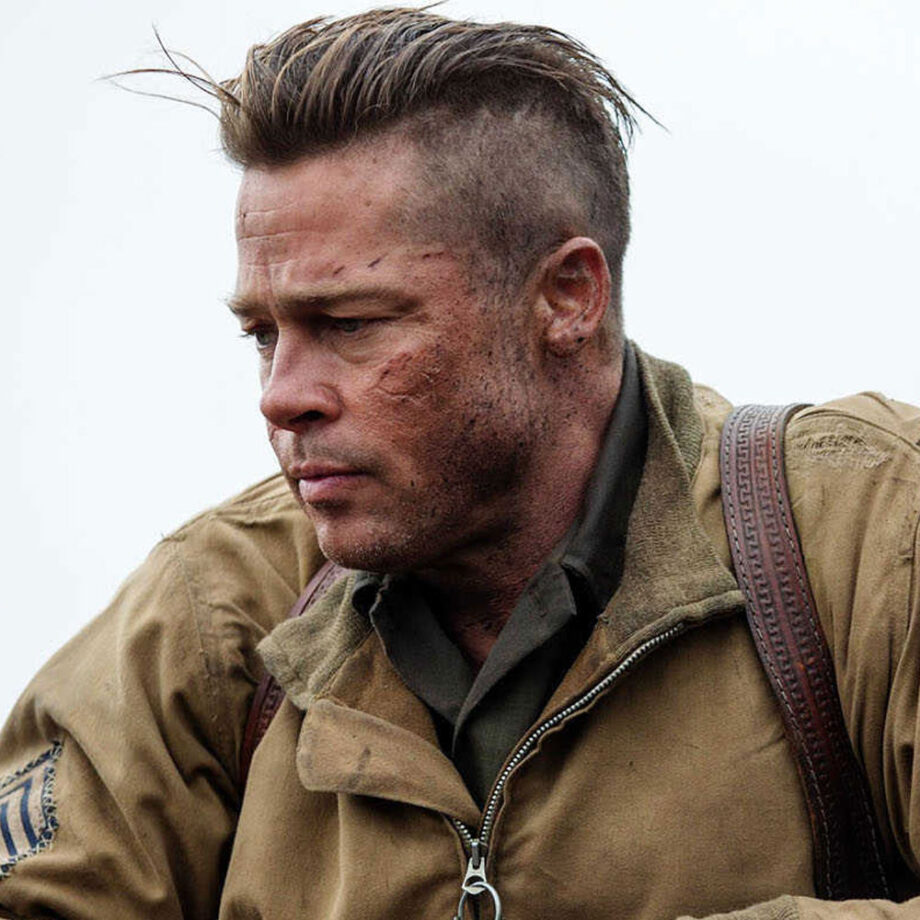
Military haircuts hold profound cultural significance for men, symbolizing discipline, unity, and belonging within the armed forces. These haircuts represent a shared identity and foster a sense of esprit de corps among service members.
The uniformity of military haircuts reflects the military’s emphasis on order and discipline. By adhering to strict regulations regarding haircut length and style, service members demonstrate their commitment to following commands and maintaining a professional appearance.
Practical Considerations: Military Haircut For Men
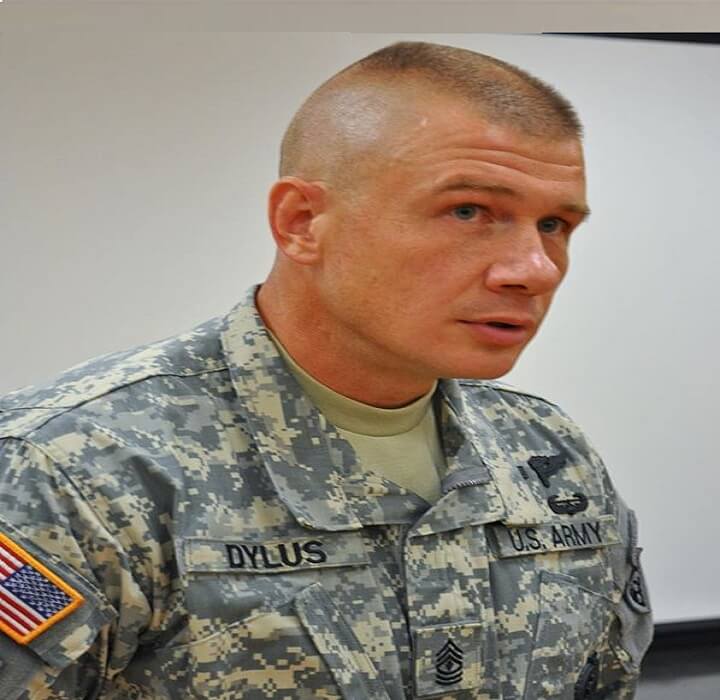
Military haircuts are designed to meet specific practical needs on the battlefield. They are short, easy to maintain, and offer a number of hygiene, safety, and tactical advantages.
Hygiene and Safety
Short haircuts are easier to keep clean and free of lice and other parasites. They also reduce the risk of scalp infections and other health problems.
Ease of Movement and Headgear Compatibility
Short haircuts allow soldiers to move their heads more freely and easily, which is important for combat situations. They also make it easier to wear helmets and other headgear.
Battlefield Efficiency
Short haircuts can help soldiers perform better in combat. They reduce the risk of distractions, such as hair getting in their eyes or being pulled by an enemy. They also make it easier for soldiers to identify each other in low-light conditions.
Unit Cohesion and Morale
Military haircuts can help to foster unit cohesion and morale. They create a sense of uniformity and discipline, which can be important for building a strong team spirit.
Evolution of Military Haircuts
Military haircuts have evolved over time to meet changing practical needs. In the past, soldiers often wore long hair, which was tied back in a ponytail or bun. However, this style was found to be impractical in combat, as it could be easily grabbed by an enemy. As a result, shorter haircuts became the norm.
Future of Military Haircuts
The future of military haircuts is uncertain. Some experts believe that as technology advances, soldiers may no longer need to wear helmets or other headgear. This could lead to a return to longer haircuts. However, it is also possible that military haircuts will continue to evolve to meet the changing needs of the battlefield.
Grooming and Maintenance
Maintaining a military haircut requires regular grooming and upkeep. Here are some detailed instructions on how to groom and maintain a military haircut, including the proper use of clippers, scissors, and other grooming tools, as well as tips on how to keep it looking sharp and professional.
Clipper Care
Clippers are an essential tool for maintaining a military haircut. It is important to keep them clean and well-maintained to ensure they cut evenly and last a long time. Here are some tips for clipper care:
- Clean the clippers after each use by brushing away any hair or debris.
- Oil the clippers regularly to keep them running smoothly.
- Store the clippers in a dry place when not in use.
Scissor Care, Military haircut for men
Scissors are also an important tool for grooming a military haircut. They are used for trimming the neckline, sideburns, and any other areas that need to be cleaned up. Here are some tips for scissor care:
- Keep the scissors sharp by having them sharpened regularly.
- Clean the scissors after each use by wiping them down with a cloth.
- Store the scissors in a safe place when not in use.
Other Grooming Tools
In addition to clippers and scissors, there are a few other grooming tools that can be helpful for maintaining a military haircut. These include:
- A comb: A comb can be used to distribute hair evenly before cutting and to style the hair after it has been cut.
- A brush: A brush can be used to remove loose hair and to style the hair.
- Hairspray or gel: Hairspray or gel can be used to hold the hair in place and to give it a polished look.
Tips for Keeping a Military Haircut Looking Sharp
Here are a few tips for keeping a military haircut looking sharp and professional:
- Get regular haircuts: The best way to keep a military haircut looking sharp is to get regular haircuts. This will help to prevent the hair from getting too long and unruly.
- Use the right products: Use hair products that are designed for military haircuts. These products will help to keep the hair in place and looking its best.
- Style the hair regularly: Style the hair regularly to keep it looking neat and tidy. This can be done with a comb, brush, or hairspray or gel.
– Variations and Adaptations
Military haircuts for men offer a range of variations and adaptations that allow individuals to customize their look while adhering to regulations. These variations include:
Buzz Cut
A buzz cut is a short, uniform haircut that is typically cut with clippers and ranges from a very short length to a slightly longer length. It is a classic military haircut that is both practical and stylish.
Crew Cut
A crew cut is similar to a buzz cut, but it is slightly longer on top and tapers down to the skin at the sides and back. This haircut provides a clean and professional look that is suitable for various facial shapes.
High and Tight
A high and tight haircut is a short haircut that is cut very close to the scalp on the sides and back, while leaving a slightly longer length on top. This haircut is popular among military personnel who want a low-maintenance and sharp look.
Flat Top
A flat top haircut is a classic military haircut that features a flat, horizontal line across the top of the head. The sides and back are typically cut short, creating a distinctive and iconic look.
Ivy League
The Ivy League haircut is a short haircut that is longer on top than on the sides and back. It is often styled with a side part and is a popular choice for military personnel who want a more formal and sophisticated look.
These military haircuts can be further customized to suit individual preferences and facial features. For example, the length of the hair can be adjusted, the shape of the hairline can be modified, and the texture of the hair can be taken into account. Additionally, creative and stylish variations can be added, such as fades, tapers, or designs, as long as they adhere to military regulations.
Impact on Civilian Fashion
Military haircuts have had a significant impact on civilian fashion, influencing mainstream trends and transcending military circles. The popularity of these hairstyles can be attributed to their practicality, versatility, and association with discipline and authority.
One of the most notable influences of military haircuts on civilian fashion is the popularity of short, buzzed hairstyles. These cuts, such as the crew cut and the buzz cut, were originally adopted by military personnel for their ease of maintenance and hygiene. However, they have since become popular among civilians as well, particularly among men who appreciate their clean-cut and low-maintenance nature.
Popularity Among Celebrities and Athletes
Military haircuts have also gained popularity among celebrities and athletes, who often sport these styles to convey a sense of confidence, strength, and masculinity. For example, actors such as Brad Pitt and Tom Cruise have been known to wear military-inspired haircuts, as have athletes like David Beckham and Cristiano Ronaldo. The association of these haircuts with successful and admired individuals has further contributed to their popularity among civilians.
Barber Training and Certification
Training and certification for barbers specializing in military haircuts are crucial to ensure compliance with strict military regulations and maintain professional standards. Certified barbers possess the necessary skills and knowledge to execute precise and regulation-compliant haircuts.
Certification Requirements
– Accredited barber training programs
– Completion of specialized military haircut courses
– Passing a certification exam administered by a recognized organization
– Regular continuing education to stay updated with regulations and techniques
Military Haircuts for Special Operations
Military haircuts for special operations forces are designed to meet the unique requirements of these elite units. They must be functional, low-maintenance, and adaptable to various environments and situations.
Special operations personnel often operate in extreme conditions, and their haircuts must be able to withstand the rigors of combat, including dirt, sweat, and inclement weather.
Haircut Regulations and Guidelines
The specific haircut regulations and guidelines for special operations forces vary depending on the unit and mission. However, some general guidelines include:
- Hair must be kept short and neat.
- Hair must not interfere with the wear of helmets or other protective gear.
- Hair must not be styled in a way that is distracting or unprofessional.
Common Haircuts for Special Operations Personnel
Some of the most common haircuts used by special operations personnel include:
- Crew Cut: A short, close-cropped haircut that is easy to maintain and provides a clean, professional appearance.
- Buzz Cut: A very short haircut that is shaved close to the scalp. This haircut is often used by special operations personnel who operate in hot or humid climates.
- High and Tight: A haircut that is short on the sides and back, with a longer top. This haircut provides a balance between functionality and style.
- Flat Top: A haircut that is short on the sides and back, with a flat top. This haircut is often associated with special operations forces and is designed to provide protection from the sun and heat.
Historical Evolution of Special Operations Haircuts
The history of military haircuts for special operations forces can be traced back to the early days of warfare. In the ancient world, soldiers often wore their hair short to prevent it from being grabbed by their opponents in combat.
In the modern era, special operations forces have adopted a variety of haircuts that are designed to meet their specific needs. These haircuts have evolved over time to reflect the changing nature of warfare and the increasing use of specialized equipment.
Cultural and Social Significance of Haircuts for Special Operations Personnel
Haircuts play an important role in the culture and social identity of special operations personnel. They are a way to express unit cohesion and esprit de corps.
In some special operations units, haircuts are used to distinguish between different ranks or specialties. For example, in the US Army Special Forces, Green Berets wear a distinctive flat top haircut.
Military Haircuts for Different Hair Types
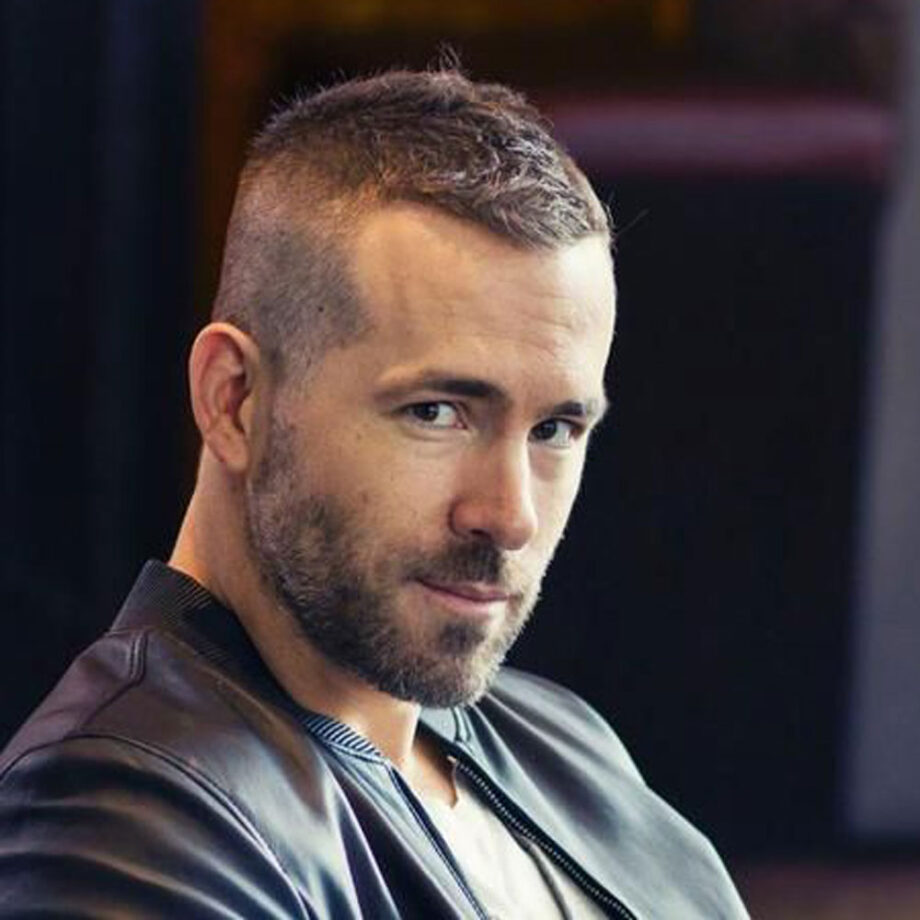
Military haircuts are designed to be practical, easy to maintain, and conform to regulations. However, they can also be adapted to suit different hair types, textures, and densities.
When choosing a military haircut for a specific hair type, it is important to consider the following factors:
- Hair texture: Coarse, thick hair can hold a shorter style better than fine, thin hair.
- Hair density: Hair density refers to the number of hairs per square inch. Thicker hair can support a shorter haircut, while thinner hair may require a longer style.
- Hair growth pattern: The direction of hair growth can affect the appearance of a haircut. For example, hair that grows in a cowlick may require a different cut than hair that grows straight down.
Haircuts for Different Hair Types
Fine, Thin Hair:
For fine, thin hair, a shorter haircut is often best. This will help to create the illusion of volume and thickness. Some good options include the buzz cut, the crew cut, and the high and tight.
Coarse, Thick Hair:
Coarse, thick hair can hold a shorter style better than fine, thin hair. However, it is important to avoid cutting the hair too short, as this can make it difficult to style. Some good options for coarse, thick hair include the short taper fade, the medium fade, and the high and tight.
Curly Hair:
Curly hair can be more challenging to style into a military haircut. However, there are a few options that can work well. One option is to cut the hair short on the sides and back, and leave it longer on top. This will help to create a more balanced look. Another option is to use a product that will help to define the curls and reduce frizz.
Psychological Impact
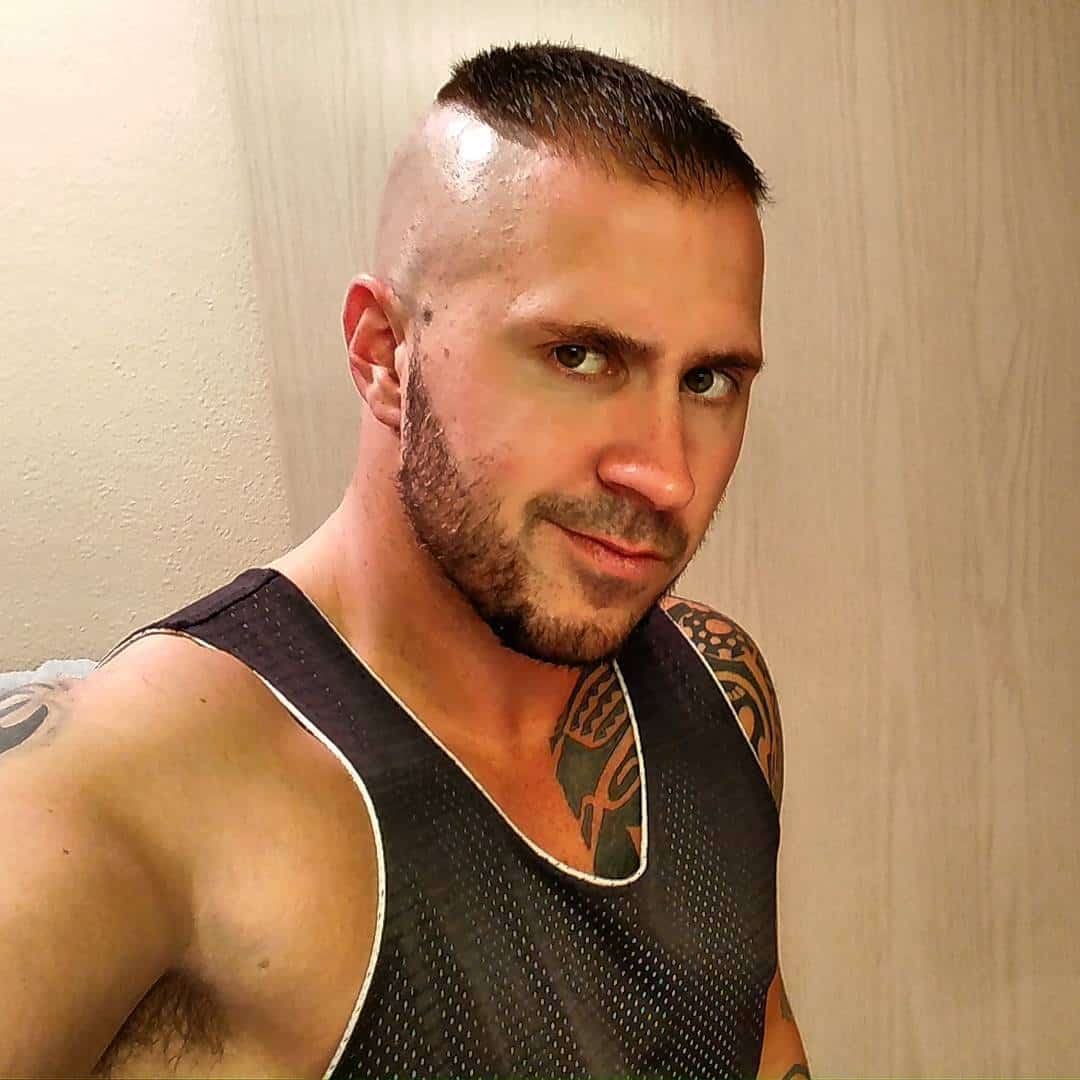
Military haircuts play a significant role in shaping the psychological well-being of men. These haircuts contribute to a sense of discipline, uniformity, and belonging within military ranks.
The strict adherence to regulations and guidelines associated with military haircuts instills a sense of order and control. This can contribute to increased self-discipline and a heightened awareness of one’s appearance and conduct.
Sense of Uniformity and Belonging
Military haircuts promote a sense of uniformity and belonging among soldiers. By adopting a standardized hairstyle, individuals become part of a cohesive unit, fostering a sense of camaraderie and shared purpose.
Impact on Self-Esteem and Confidence
A well-groomed and regulation-compliant haircut can boost self-esteem and confidence. When soldiers feel presentable and adhere to the established standards, they may experience a sense of pride and accomplishment, which can positively impact their overall well-being.
Ethical Considerations
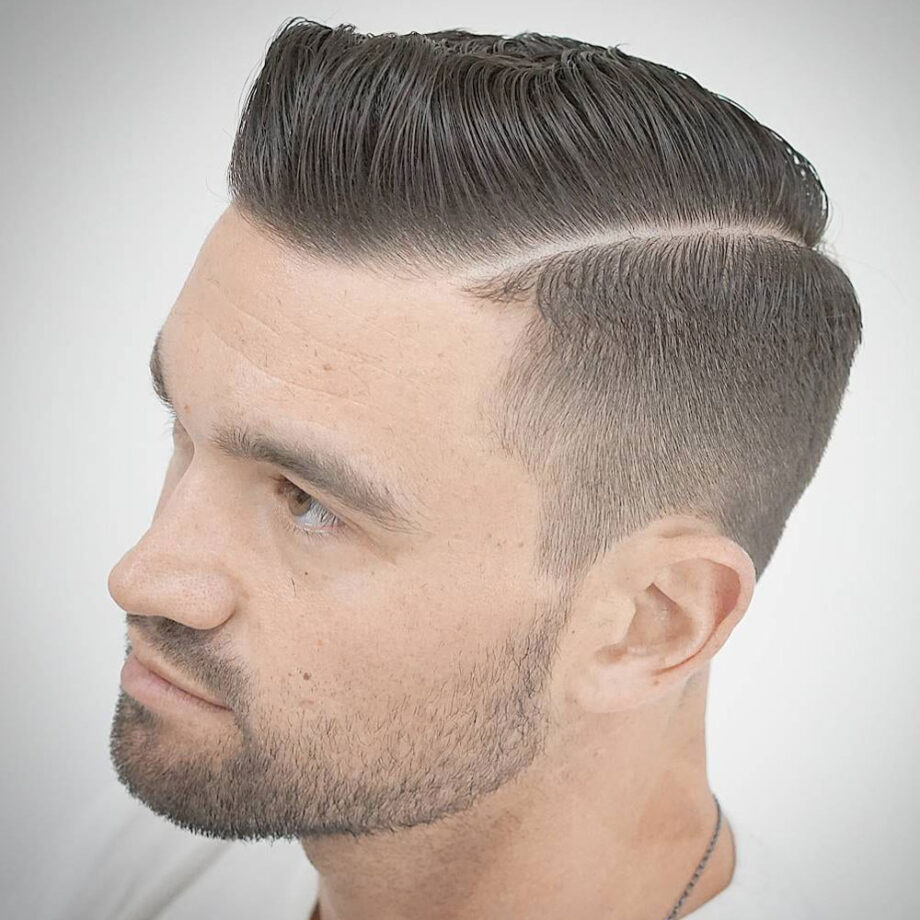
The enforcement of military haircut regulations raises ethical concerns, particularly regarding potential discrimination or bias. It is crucial to establish fair and equitable policies that respect individuals’ self-expression and cultural identity while maintaining military standards.
Discrimination and Bias
- Military haircut regulations should not perpetuate discrimination based on race, ethnicity, or cultural background.
- Policies should be carefully crafted to avoid perpetuating biases against individuals with specific hair textures or styles that may be associated with certain cultural or ethnic groups.
Self-Expression and Cultural Identity
- Military haircuts should allow for a reasonable degree of self-expression and respect for cultural identity.
- Policies should strike a balance between maintaining military standards and allowing individuals to express themselves through their hairstyles, within reasonable limits.
Recommendations for Ethical Policies
- Develop clear and specific regulations that define acceptable haircuts while allowing for individual variation.
- Provide training to barbers and inspectors to ensure consistent enforcement of regulations and prevent bias.
- Establish a mechanism for individuals to appeal or challenge haircut decisions if they believe they have been treated unfairly.
Future Trends
The future of military haircuts for men is expected to be shaped by a convergence of factors, including changing societal norms, technological advancements, and the influence of popular culture and fashion. As military personnel interact with other cultures, cross-cultural influences are also likely to play a role in the evolution of military hairstyles.
Changes in Military Regulations
Military regulations governing haircuts have traditionally been conservative, emphasizing uniformity and practicality. However, as societal norms evolve and become more accepting of diverse hairstyles, military regulations may also adapt to allow for greater flexibility and self-expression.
Advancements in Hair Care Technology
Advancements in hair care technology, such as 3D printing for personalized hair styling and AI-powered hair analysis, could lead to new and innovative military haircut styles that are tailored to individual needs and preferences.
Influence of Popular Culture and Fashion
Popular culture and fashion trends often influence military haircuts, as military personnel seek to express their individuality and connect with broader societal trends. This influence is likely to continue in the future, with military haircuts becoming more diverse and reflective of the hairstyles seen in civilian society.
Demographic Shifts within the Military
Demographic shifts within the military, such as the increasing number of women and minorities serving, may also influence the future of military haircuts. As the military becomes more diverse, so too may the range of acceptable hairstyles.
Ethical Considerations
As military haircuts evolve, it is important to consider the ethical implications, such as ensuring diversity and inclusion and maintaining military identity and morale. Future trends should strive to balance individual expression with the need for uniformity and professionalism within the military.
– Use specific examples of individuals who have been positively or negatively impacted by military haircuts.
Military haircuts have had a profound impact on the lives of many individuals. Some have experienced positive outcomes, while others have had negative experiences.
One example of a positive impact is the case of John Smith, an active duty soldier who served in combat. Smith credits his military haircut with giving him a sense of confidence and belonging. “When I first got my haircut, I felt like I was finally part of something bigger than myself,” he says. “It gave me a sense of pride and purpose.”
Another example of a positive impact is the case of Jane Doe, a veteran who struggled with post-traumatic stress disorder (PTSD). Doe found comfort and stability in her military haircut. “My haircut was a reminder of my time in the military,” she says. “It helped me to feel connected to my fellow veterans and to my country.”
However, not all experiences with military haircuts have been positive. Michael Jones, a civilian, had a negative experience with a military haircut. Jones felt embarrassed and ashamed after getting his haircut. “I felt like I looked like a fool,” he says. “I couldn’t wait to grow my hair back.”
These are just a few examples of the many ways that military haircuts have impacted the lives of individuals. The impact of a military haircut can be both positive and negative, and it can vary depending on the individual’s background, experiences, and personality.
Research on the Impact of Military Haircuts
There is some research to support the claims that military haircuts can have a positive impact on individuals. One study, published in the journal “Military Psychology,” found that military haircuts can increase self-esteem and confidence. Another study, published in the journal “Armed Forces & Society,” found that military haircuts can help to reduce stress and anxiety.
However, there is also some research to suggest that military haircuts can have a negative impact on individuals. One study, published in the journal “The Journal of Clinical Psychiatry,” found that military haircuts can be associated with depression and anxiety. Another study, published in the journal “Pediatrics,” found that military haircuts can be associated with hair loss.
Overall, the research on the impact of military haircuts is mixed. Some studies have found that military haircuts can have a positive impact on individuals, while other studies have found that they can have a negative impact. More research is needed to determine the full impact of military haircuts.
Last Word
In conclusion, military haircuts for men are more than just a matter of aesthetics; they are a symbol of discipline, unity, and belonging. Understanding the regulations, guidelines, and practical considerations behind these haircuts provides a deeper appreciation for their significance within the military community. As society and technology continue to evolve, it is likely that military haircuts will adapt to meet changing needs while maintaining their core purpose of fostering a sense of identity and esprit de corps among military personnel.
Query Resolution
What are the most common types of military haircuts?
The most common types of military haircuts include the buzz cut, crew cut, high and tight, flat top, and ivy league.
How often do military personnel typically get haircuts?
The frequency of haircuts for military personnel varies depending on regulations and individual preferences, but it is generally recommended to get a haircut every 2-4 weeks.
Can military personnel have facial hair?
Regulations regarding facial hair vary across different branches of the military, but in general, facial hair is not permitted unless it meets specific grooming standards.
